In today’s world, where environmental consciousness is more crucial than ever, crafting your own eco-friendly cleaning products is a step towards a sustainable lifestyle. Not only do these homemade solutions benefit the planet by reducing chemical runoff and plastic waste, but they also offer a safer, healthier environment within your home. Moreover, the cost-effectiveness of DIY cleaning products is an added advantage, making them accessible to a wider audience. This guide delves into the world of natural, homemade cleaners, providing practical recipes and tips to transform your cleaning routine into an eco-friendly practice.
Contents
The Basics Of Eco-Friendly Cleaning Ingredients
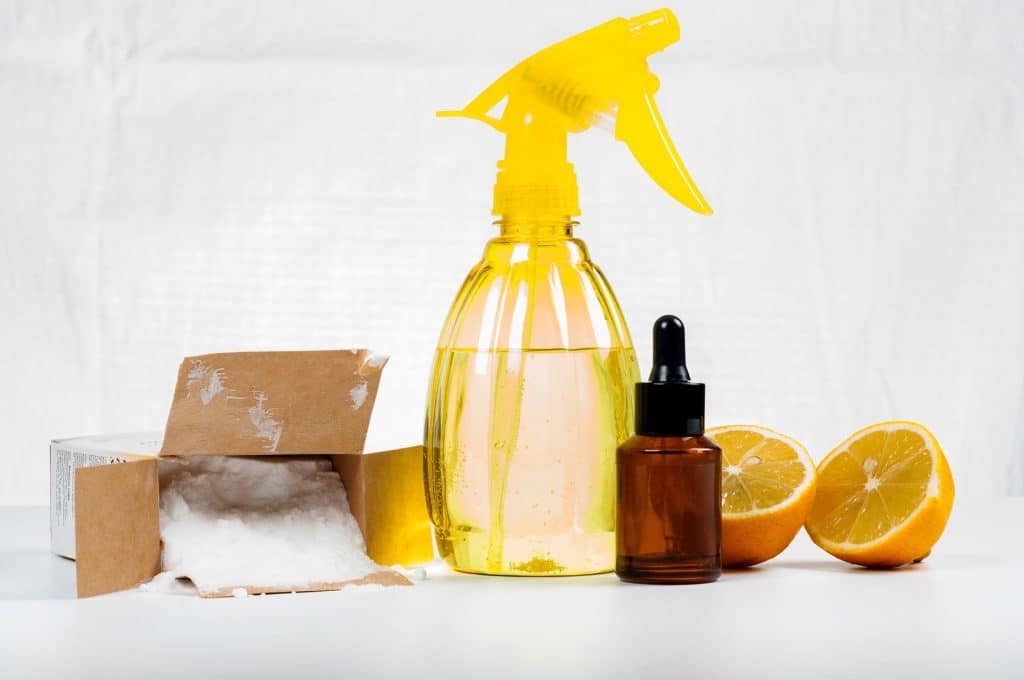
The journey to creating effective eco-friendly cleaning products begins with understanding the core ingredients. Everyday household items like vinegar, baking soda, and lemon are not just culinary staples but also powerful cleaning agents. With its acetic acid content, vinegar acts as a natural disinfectant and deodorizer, making it perfect for tackling germs and odors. Baking soda, on the other hand, is a mild alkali that can dissolve dirt and grease in water, serving as a gentle yet effective scrubbing agent. Lemon’s citric acid contributes to its antibacterial properties, and its fresh scent leaves surfaces smelling clean.
These natural ingredients are effective and safe for children and pets, unlike many commercial cleaners that contain harmful chemicals. However, it’s essential to understand their limitations and best combinations. For instance, mixing vinegar with baking soda neutralizes both, diminishing their cleaning power. Additionally, proper storage of these homemade cleaners is crucial to maintain their efficacy. Dark, cool places are ideal to preserve the potency of essential oils, if used, and to prevent the degradation of other ingredients.
All-Purpose Cleaners: Versatility In A Bottle
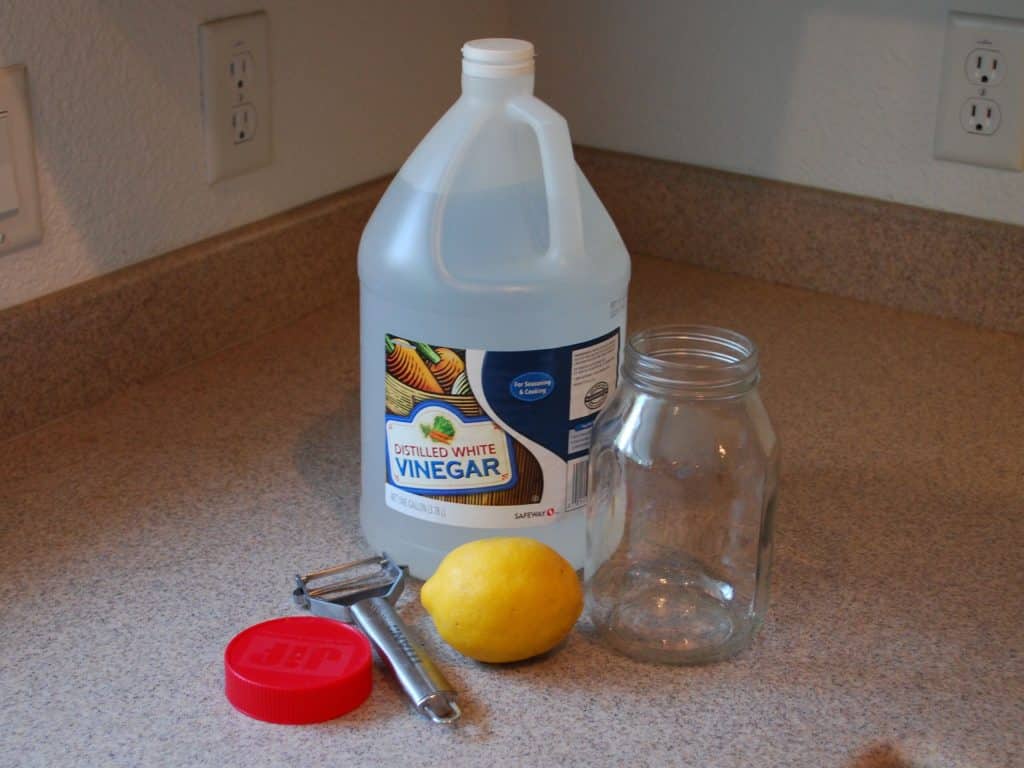
An all-purpose cleaner is a must-have in any eco-friendly cleaning arsenal. A simple yet effective recipe involves mixing equal parts of water and vinegar, adding a squeeze of lemon juice for extra cleaning power and a pleasant scent. This solution works wonders on most surfaces, from countertops to appliance exteriors, effectively cutting through grease and grime. For a more potent cleaner, a few drops of essential oils like tea tree or lavender can be added, both known for their antimicrobial properties.
However, not all surfaces are created equal. For delicate surfaces like glass or varnished wood, it’s advisable to reduce the vinegar concentration to avoid damage. A solution of one part vinegar to four parts water, with a small amount of liquid dish soap, creates a gentle yet effective glass cleaner. For wood surfaces, substituting vinegar with olive oil and lemon juice not only cleans but also nourishes the wood. These variations demonstrate the versatility and adaptability of homemade cleaners, making them suitable for a wide range of household cleaning needs.
Kitchen Cleaners: Safe And Effective
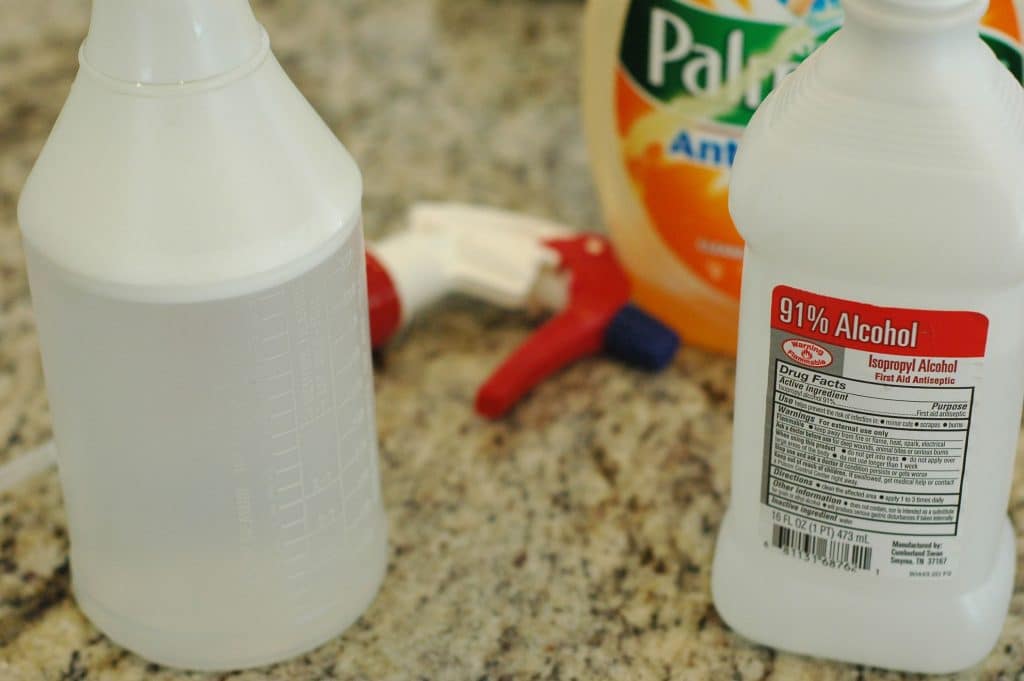
The kitchen, being a hub of food preparation, demands cleaning products that are both effective and food-safe. A countertop cleaner can be made by combining water, rubbing alcohol, and a few drops of dish soap. This mixture cleans and disinfects surfaces, making it ideal for areas where food is handled. For tougher kitchen stains, a paste of baking soda and water can be applied, left to sit for a few minutes, and then scrubbed away, effectively removing even the most stubborn residues.
Dish soap is another kitchen staple that can be easily made at home. A blend of castile soap, water, and a few drops of essential oil creates a gentle yet effective dishwashing liquid. For greasy pans and dishes, adding a bit of baking soda to the mix can boost its grease-cutting power. These homemade solutions not only keep your kitchen surfaces and utensils clean but also ensure that no harmful residues are left behind, keeping your food and family safe from chemical exposure.
Bathroom Busters: Tackling Tough Grime
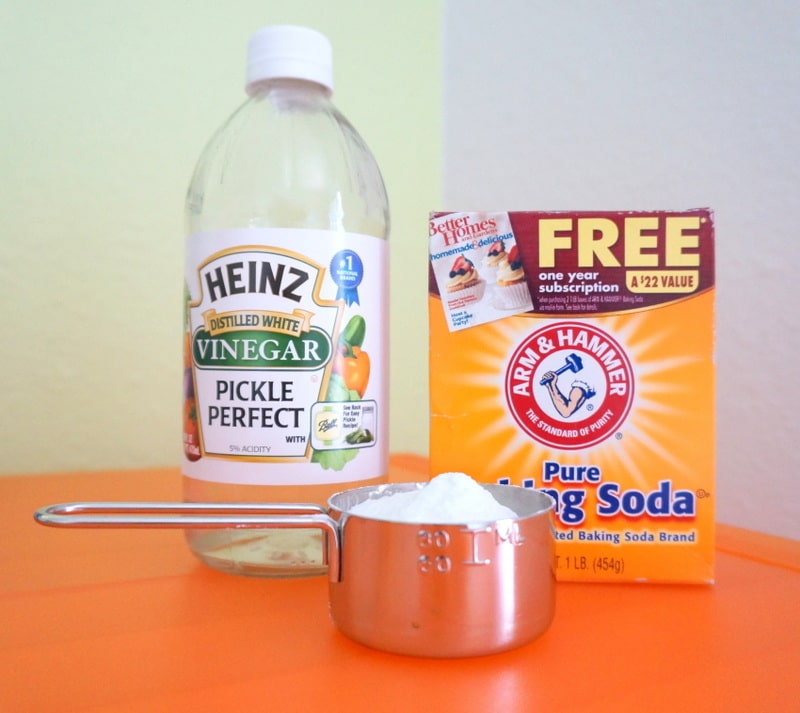
The bathroom is a breeding ground for bacteria and mold, making it crucial to have effective cleaning solutions. A homemade toilet cleaner can be made by mixing baking soda and vinegar, which creates a fizzing action that helps remove tough stains and sanitize the bowl. For shower and bathtub cleaning, a paste of baking soda, a small amount of liquid dish soap, and essential oils like eucalyptus or peppermint can be used. This paste not only cleans but also leaves a refreshing scent. The anti-fungal properties of certain essential oils make them ideal for combating mold and mildew commonly found in bathrooms.
Tile and grout cleaning require a slightly different approach. A solution of hydrogen peroxide and baking soda can be applied to grout lines, left to sit for a few minutes, and then scrubbed clean. This method effectively brightens grout and removes any mildew or soap scum build-up. For general tile cleaning, a mixture of water, vinegar, and a drop of dish soap works well, ensuring the tiles are left sparkling without any harmful chemical residue. Regular use of these natural cleaning solutions can help maintain a clean, hygienic, and fresh-smelling bathroom environment.
Laundry Solutions: Gentle On Clothes, Tough On Stains
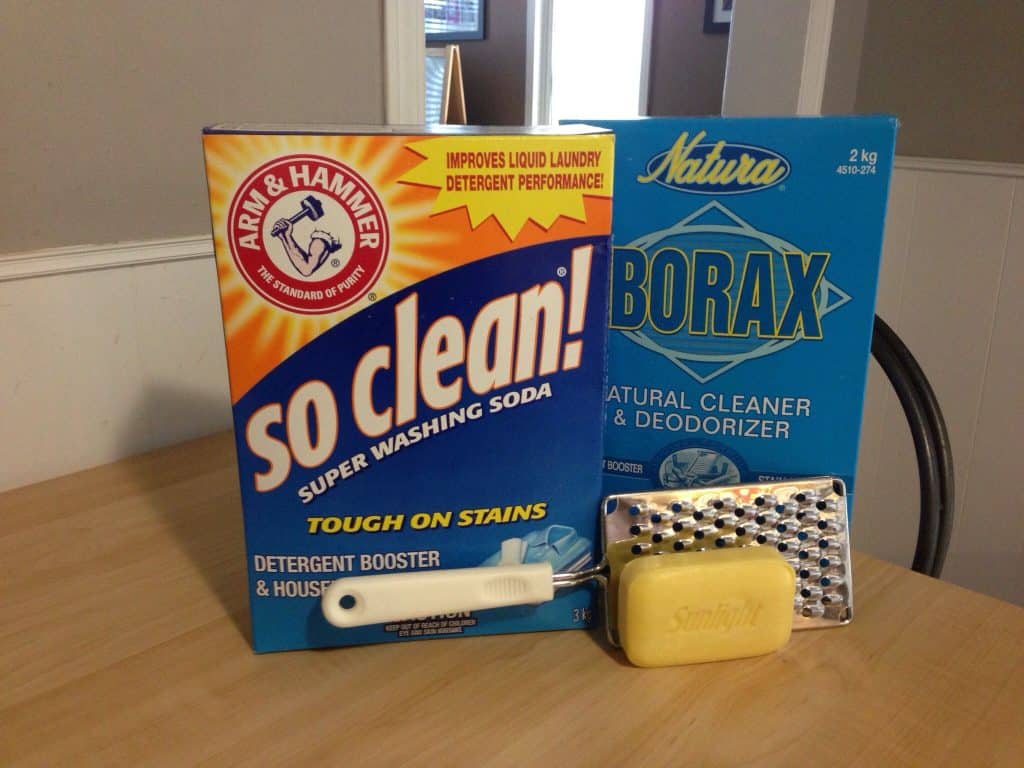
Creating eco-friendly laundry solutions is simpler than one might think. A basic homemade laundry detergent can be made by combining washing soda, borax, and grated bar soap. This mixture is effective in removing dirt and stains and gentle on clothes, making it suitable for regular use. For those with sensitive skin, the soap can be replaced with baking soda, which is a natural softener and also maintains the pH balance of the wash water. Adding a few drops of essential oils like lavender or lemon can leave clothes with a pleasant, natural fragrance.
Stain removal in an eco-friendly laundry regime requires a bit more creativity. A pre-treat solution can be made by mixing baking soda and water into a paste and applying it directly to stains before washing. For tougher stains, a mixture of hydrogen peroxide and dish soap can be effective, especially on organic stains like food or blood. These natural methods keep clothes clean and extend their life by avoiding harsh chemicals. Additionally, using white vinegar as a fabric softener during the rinse cycle can help remove detergent residues and soften fabrics without the use of synthetic chemicals.
Floor Cleaners For Every Surface
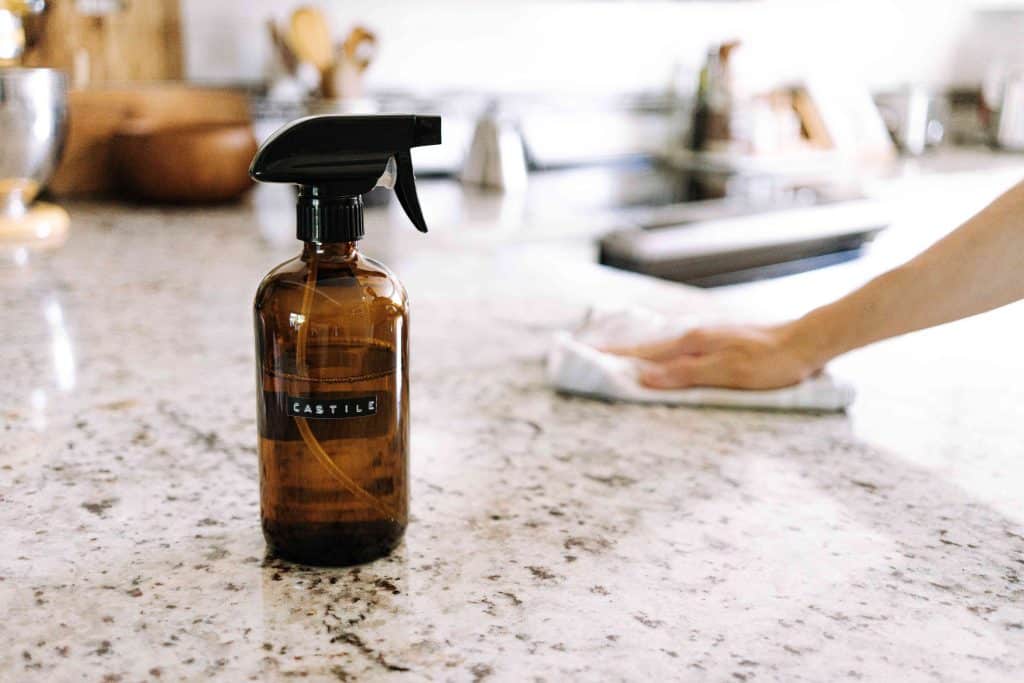
Different types of flooring require specific cleaning solutions to maintain their appearance and longevity. For hardwood floors, a mixture of water and a small amount of castile soap can clean effectively without damaging the wood. It’s important to wring out the mop or cloth well to avoid excess water, which can harm wood floors. For tile and linoleum, a solution of water, vinegar, and a drop of dish soap works well, cutting through dirt and leaving a streak-free finish. Adding a few drops of essential oils can leave a fresh scent and add antibacterial properties to the cleaner.
Carpet cleaning can be approached in a more dry manner. Sprinkling baking soda over the carpet, letting it sit for a few hours, and then vacuuming it up can help remove odors and light stains. For spot cleaning, a mixture of vinegar and water, applied directly to the stain and blotted with a clean cloth, can be effective. These natural floor cleaning solutions are safer for the environment and the home’s inhabitants but also help preserve the quality and appearance of the flooring over time.
Air Fresheners: Natural Aroma For Your Home
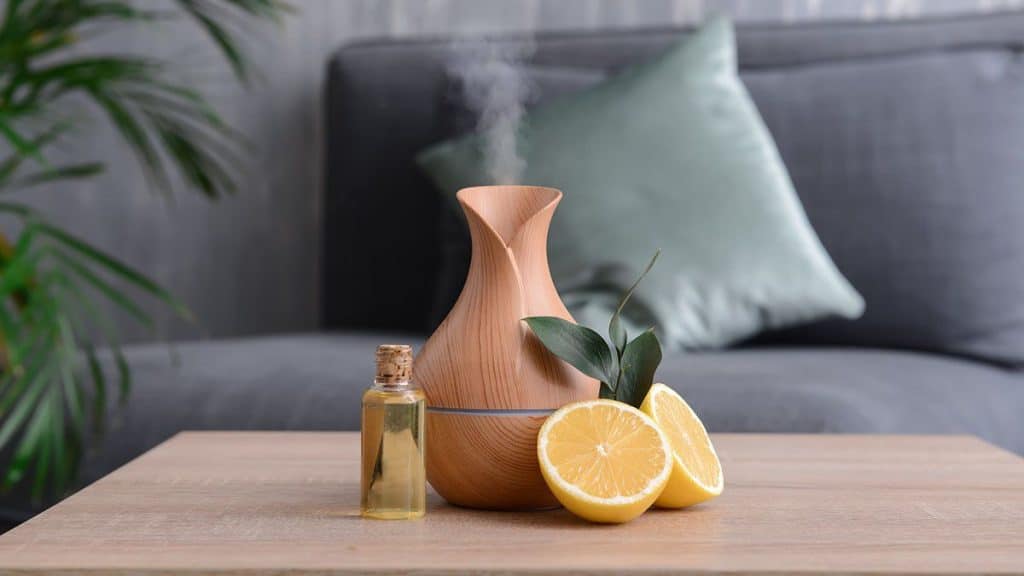
Creating a pleasant atmosphere in the home often involves the use of fragrances, but commercial air fresheners can contain harmful chemicals. A natural alternative is to use essential oils in a diffuser, which disperses a gentle scent throughout the room without using aerosols. Another simple method is to simmer water with natural ingredients like citrus peels, cinnamon sticks, or cloves on the stove, which can fill the home with a warm and inviting aroma. These methods are not only safer but also allow for customization of scents according to personal preferences.
For more targeted scent solutions, homemade gel air fresheners can be made using unflavored gelatin, water, essential oils, and natural coloring. These can be placed in small jars around the home for a subtle, continuous fragrance. Additionally, sachets filled with dried herbs and flowers can be placed in drawers or closets to keep clothes smelling fresh. These natural air freshening techniques offer a safer and more environmentally friendly way to keep the home smelling pleasant, avoiding the toxins and waste associated with traditional air fresheners.
Discover The Art Of Eco-Friendly Cleaning
In embracing these eco-friendly cleaning methods, not only do you contribute to a healthier environment, but you also ensure a safe and natural space for yourself and your loved ones. The simplicity and effectiveness of these homemade solutions demonstrate that sustainable living can be easily integrated into daily routines. Start crafting your own eco-friendly cleaning products today and experience the difference in your home. Remember, every small step towards eco-conscious living makes a significant impact on the planet’s health.